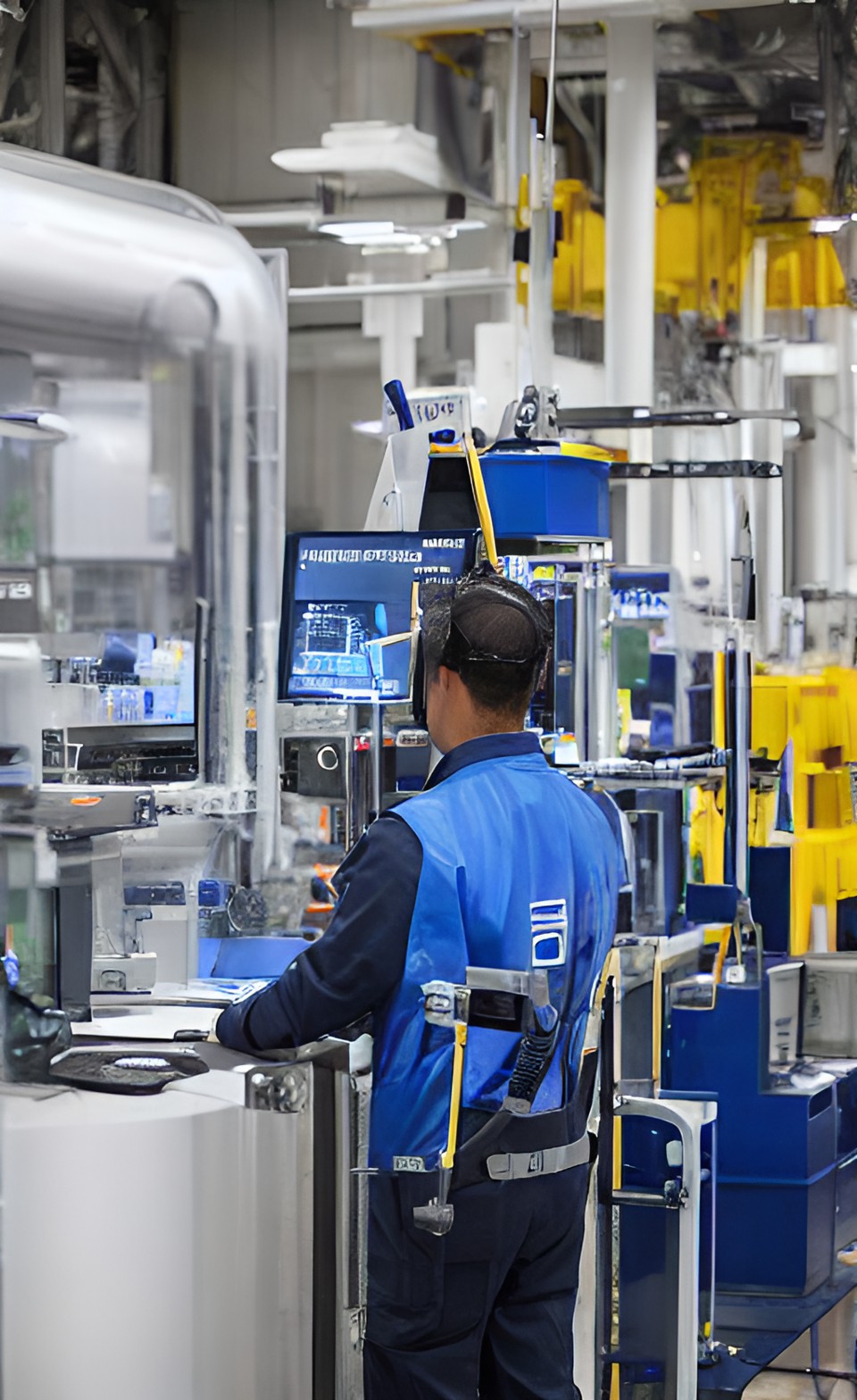- Air Homepage
- Alberta Air Quality
- Ambient Air Monitoring Equipment
Alberta's Comprehensive AMD Guidelines for Ambient air monitoring equipment
Check the detailed regulations for cutting-edge ambient air monitoring equipment and unrelenting commitment that keep the air in Alberta clean.
The Technical Specs for Air Monitoring Gear in AMD Chapter 4 - Does your air monitoring equipment's SO2 detection limit still meet Alberta's mandatory standards? Stop risking non-compliance and unlock the critical tables that define every analyzer's accuracy, range, and operational rules.
 Natural landscapes and wildlife abound in Alberta.
Natural landscapes and wildlife abound in Alberta.Something remarkable is happening in the air in Alberta, where the Canadian Rockies meet endless rolling plains. Imagine standing at the crossroads of environmental stewardship and technological precision, where our breaths are scrutinized for purity.
The article introduces you to the details of Alberta's air quality monitoring, an underappreciated but vital endeavor that keeps our province's natural beauty and communities safe. The seemingly limitless skies hide a world of data-driven vigilance, connecting you to the very heart of Alberta's air quality guardians.
The Air Monitoring Directive (AMD) sets the rules for air quality monitoring equipment and methods in Alberta and ensures high-quality, consistent data across the province. Compliance became due in July 2017. Various aspects of air monitoring are covered, including continuous monitoring, integrated sampling, mobile monitoring, precipitation chemistry, vegetation monitoring, and industrial source monitoring.
This website page takes you through Sections 1 and 2 of Chapter 4 of the AMD. A summary of Section 3 for monitoring techniques can be viewed on this next page. Section 4 (mobile monitoring) is outlined on this page.
- You will find a rundown of Section 5 for handling precipitation analysis here
- The remainder of Chapter 4 includes Section 6 and the appendices. Here is the summary.
1. Purpose of Chapter 4
1.1 Amendments
There have been a few changes to the Air Monitoring Directive (AMD) over the years. There are updates to document design, clarifications, terminology changes, additional guidance for various sections, minor edits, and corrections to monitoring requirements and equipment specifications. The AMD has been updated to improve and clarify monitoring processes.
1.2 General Monitoring Requirements
Here's how to do air monitoring outside of the Air Monitoring Directive (AMD). A Director's written authorization is needed if someone wants to use different methods, equipment, or monitor additional parameters not listed in the AMD. Chapter 9 of the AMD has more info on reporting special air studies.
2. Continuous Ambient Air Monitoring Equipment
There are requirements for continuous ambient air monitoring equipment, including analyzers and meteorological sensors. The specs are based on current technology and a wide range of instruments. There's no specific brand or product that the Regulator likes. The Monitoring Chapter outlines the requirements and specifications for collecting air monitoring data for the Regulator.
2.1 Performance Specification Standards
Conflicts between AMD's terms and conditions and these sheets should be resolved in AMD's favor. Based on existing technology, air analyzers and meteorological sensors meet the minimum requirements. Over time, they might change. These instruments must follow the performance specs outlined on AMD's website. Conflicts between AMD's terms and conditions and these sheets should be resolved in AMD's favor.
 Air pollution comes from industries, transportation, and agriculture.
Air pollution comes from industries, transportation, and agriculture.2.2 Operation and Maintenance
Air analyzers and meteorological sensors must be operated and maintained according to the Monitoring Chapter. The performance of this ambient air monitoring equipment depends on how well they're maintained and operated. Conflicts between the Monitoring Chapter and the manufacturer's specs should be resolved in favor of the Monitoring Chapter, unless the Director authorizes otherwise. Each monitoring station should have a copy of the manufacturer's manual.
2.3 Reporting and Notification
The AMD has reporting and notification requirements for continuous ambient air analyzers and meteorological sensors.
2.4 Continuous Ambient Air Analyzers
If you have a continuous ambient air analyzer purchased after July 2015, it has to meet specific performance standards unless you get written permission. Existing analyzers also have to meet these standards since July 2017, unless otherwise authorized. You'll need to upgrade or replace your analyzer if it doesn't meet these requirements. If it can do better than the minimum standards, it's automatically accepted. Table 1 covers things like detection limits and operating ranges, which you should choose based on your monitoring needs. The analyzer needs to be able to detect high levels of industrial pollution, for example.
2.5 Meteorological Sensors
Meteorological sensors after July 2015 have to meet certain performance standards unless you have written permission to use an equivalent. Existing sensors should have met these standards by July 2017, unless otherwise authorized. Equivalent sensors can be used with written authorization. If your sensor does better than the minimum standards, it's automatically accepted. It's okay to use a wind speed sensor with a lower detection level than the minimum. There are a lot of factors to consider when choosing the right method, like maintenance and cost. Sensors should be chosen based on what they're supposed to monitor, like temperature sensors that can handle a range of temperatures.
Summary of Table 1
Here are the minimum requirements for different air analyzers:
 Good faith, accurate results
Good faith, accurate results- Ammonia: It should be able to measure a range of 5 ppm for routine monitoring, and 1 ppm for trace levels. It should be accurate and have low noise.
- The range for VOCs (Volatile Organic Compounds) is 1 ppm for routine and 10 ppm for trace levels, with low noise and high accuracy.
- Carbon monoxide: It needs a range of 50 ppm and 20 ppb noise for routine monitoring. It should be able to detect 50 ppb with 20 ppb noise for trace levels.
- Ethylene Hydrocarbons: As with carbon monoxide, it needs to measure 50 ppm for routine and 50 ppb for trace levels.
- H2S / TRS needs to detect 1 ppm for routine monitoring and 60 ppb for trace levels.
- O3 should measure 0.5 or 1 ppm for routine and 0.5 ppm for trace levels.
- Oxides of Nitrogen: Like ozone, it needs to be measured at 0.5 ppm for routine and at 0.5 ppm for trace levels.
- PM For routine monitoring, it should measure 500 g/m3 or 1000 g/m3, and for trace levels, it should be able to detect 4.8 g/m3 with low noise.
- SO2 It needs to measure 0.5 ppm or 1 ppm for routine monitoring and 1 ppm for trace levels.
To detect pollutants in the air, these analyzers use chemiluminescence, gas chromatography, and more. They have to meet certain standards for accuracy, noise levels, and detection limits. We want to make sure air quality is monitored effectively and pollutants are measured accurately.
Summary of Table 2
These are the minimum requirements for different meteorological sensors:
- The sensor should measure temperatures between -30°C and 50°C with an accuracy of 0.6°C.
- With an accuracy of 0.1°C, it should be able to measure barometric pressure from -30°C to 50°C.
- Sensor needs to measure relative humidity from 0% to 100% with an accuracy of 1.5 hPa.
- It should measure solar radiation from 0 to 1300 W/m2.
- There are no requirements for surface wetness.
- Sensor should measure wind direction from 0° to 360° with an accuracy of 3°.
- It needs to measure wind speeds from 0.0 to 50.0 m/s with an accuracy of 0.25 m/s or 2%.
Thermal resistors, thermocouples, aneroid barometers, and more are used to collect data about temperature, pressure, humidity, solar radiation, and wind. These standards are to help make sure weather and environmental data is accurate.
Air quality dispersion modeling you can trust...
Calvin Consulting Group Ltd.
Calvin Consulting Group Ltd. can help you with precision, reliability, and peace of mind. Over 30 years of experience in air quality assessments that protect your business and the environment. Rather than just meeting provincial and national standards, we set them. Our regulators have trained at Alberta Environment and Protected Areas, Alberta Energy Regulator, and Environment Canada.
Detailed and comprehensive. We build site-specific meteorological files, process terrain data, and incorporate all significant emission sources. We deliver actionable results with cutting-edge models like AERMOD and CALPUFF.
Why Calvin Consulting? There's a lot at stake. Clean air isn't just for compliance, it's for our health. Let us handle your projects responsibly, efficiently, and stress-free.
We'll simplify dispersion modelling so you can focus on what you do best. Reach Barry at Calvin Consulting for expert advice.
Providing specific equipment specifications and operational guidelines, this article gives you a summary of the Alberta Air Monitoring Directive (AMD, Chapter 4), ensuring accurate and consistent air quality monitoring.
Here we cover the first two sections: continuous ambient monitoring, equipment standards, performance specs, operation, and maintenance, making it a valuable resource for air quality technicians.
Do you have concerns about air pollution in your area??
Perhaps modelling air pollution will provide the answers to your question.
That is what I do on a full-time basis. Find out if it is necessary for your project.
Have your Say...
on the StuffintheAir facebook page
Other topics listed in these guides:
The Stuff-in-the-Air Site Map
And,
Thank you to my research and writing assistants, ChatGPT and WordTune, as well as Wombo and others for the images.
OpenAI's large-scale language generation model (and others provided by Google and Meta), helped generate this text. As soon as draft language is generated, the author reviews, edits, and revises it to their own liking and is responsible for the content.




New! Comments
Do you like what you see here? Please let us know in the box below.